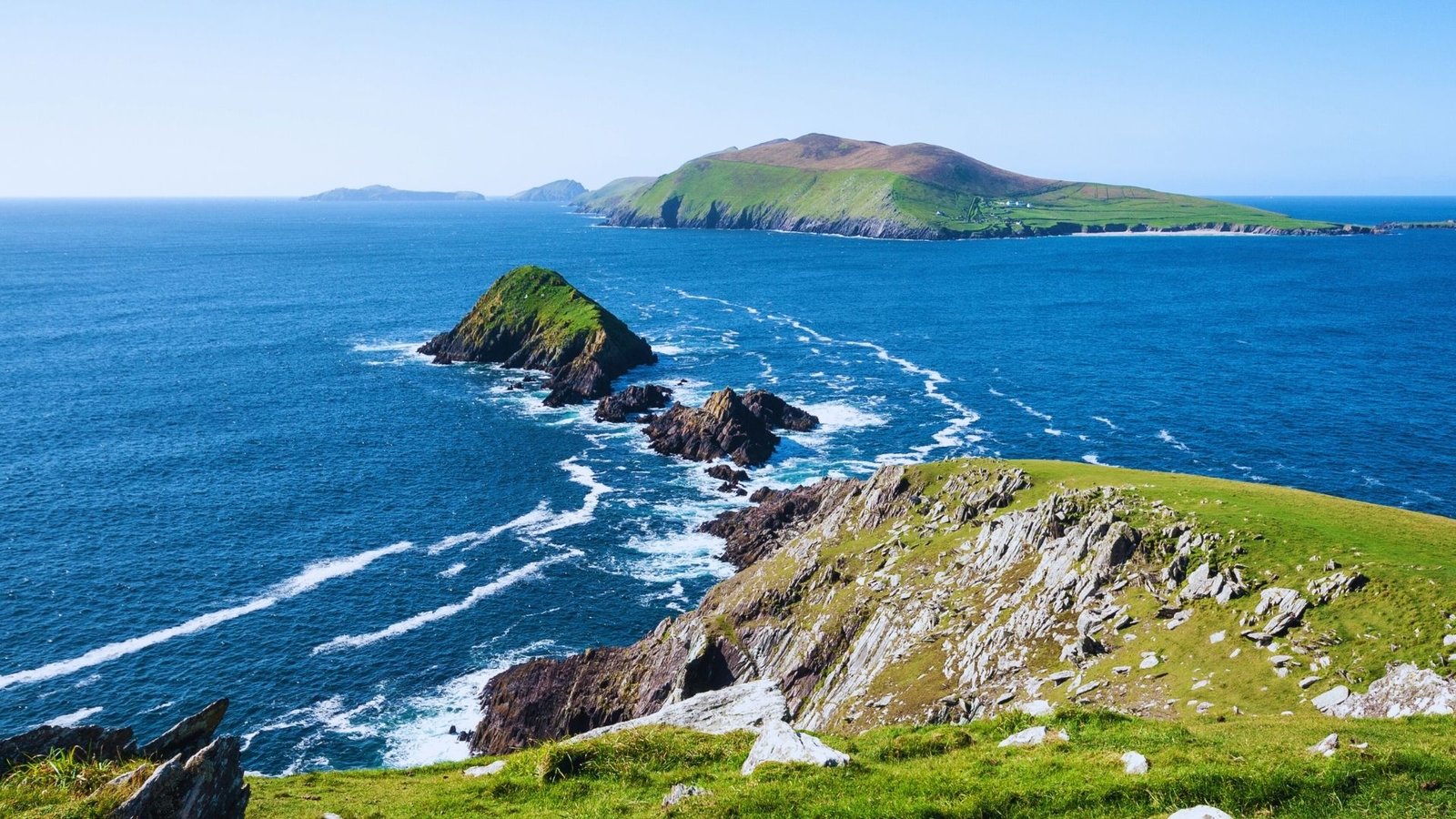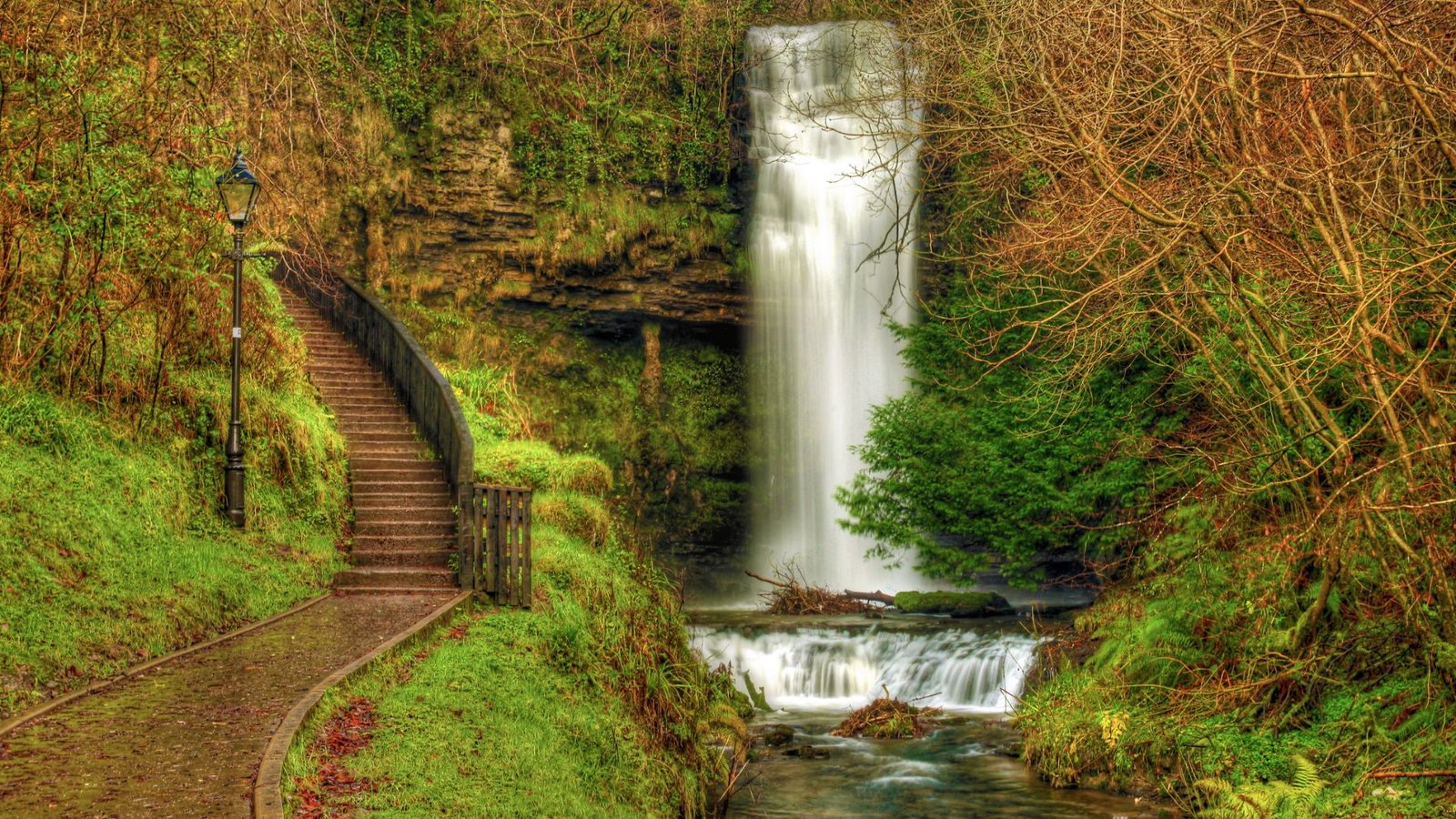When I visited Dunmore Cave in 2019 with a group of friends, it felt like stepping into a hidden world beneath the surface of Ireland. Located just outside Kilkenny, this cave isn’t the biggest, but it’s packed with history and geological wonder. As we ventured deeper into its dark chambers, the cool air and echoes of ancient times gave the place an almost eerie, mystical feel.
Dunmore Cave is known for its Viking connection and the tragic story of a massacre that happened here centuries ago. But what really struck me was the impressive stalactites and stalagmites that have been slowly forming for thousands of years. It’s not your typical tourist spot, but if you’re into history and natural beauty, it’s definitely worth a visit.

Explore more about this exotic place with my detailed guide.
Detailed Guide to Dunmore Cave
Location
Dunmore Caves, also known as Kilkenny Caves, are nestled in the heart of County Kilkenny, about 11 kilometres north of Kilkenny city, making it a convenient stop if you’re exploring the area. To reach the caves, you’ll take a short drive along the R693 road, which winds through the charming Irish countryside. If you’re not driving, Kilkenny has good transport links, and local taxis or tour operators can easily take you to the cave.
The cave itself sits in a quiet, rural setting, surrounded by rolling green fields, which adds to its secluded, almost mysterious vibe. There’s a well-marked entrance and a visitor center with parking facilities, so it’s easy to navigate even if you’re new to the area. Whether you’re staying in Kilkenny or passing through, Dunmore Cave is a quick detour that offers a unique look into Ireland’s natural history and folklore.
History
Dunmore Cave has a deep and fascinating history that dates back over a thousand years. The most notable event associated with the cave is the tragic Viking massacre of 928 AD, where a group of Norsemen reportedly sought refuge here during a raid, only to be discovered and slaughtered. The eerie atmosphere of the cave, with its dark chambers and narrow passages, seems to echo this bloody past, making it a site steeped in both myth and fact.
However, the history of Dunmore Caves stretches even further back. It’s mentioned in the ancient Irish text Triads of Ireland, which lists it as one of the “three darkest places in Ireland.” Archaeological excavations have revealed artefacts like human remains, Viking coins, and other relics, offering further evidence of the cave’s significance throughout the ages.
Beyond its Viking history, the cave also has geological importance, with formations growing for millions of years, adding a sense of timelessness to its already haunting past. Visiting Dunmore Caves is like stepping into a natural time capsule that blends Ireland’s violent history with the wonders of the Earth itself. Then, archaeologists tragically found a large number of human remains in the cave.
Parking
Parking at Dunmore Caves is straightforward and convenient. There’s a designated car park right next to the visitor centre, offering plenty of space for cars and small buses.
It’s free to park, which is always a bonus, and the lot is just a short walk from the cave entrance, making it easy for visitors to access the site. The parking area is well-maintained and safe, and since Dunmore Cave isn’t overly crowded, you won’t have to worry about struggling to find a spot even during peak tourist season.
Fees & Timings
As of September 14, 2024, admission to Dunmore Cave is €5 for adults, €4 for seniors or groups, €3 for children or students, and €13 for families. The cave is open Wednesday to Sunday from 9:30 AM to 5:00 PM, with last entry at 4:00 PM. It’s closed on Mondays and Tuesdays, except on Bank Holidays. For the latest updates on fees and timings, please visit the official site here, as details may change in the future.

Facilities
Dunmore Cave offers essential facilities, including restrooms and wheelchair-accessible areas within the visitor centre. While there’s no café on-site, you can find refreshments in nearby Kilkenny.
The cave experience itself involves several steps, which may be challenging for visitors with mobility issues, but the exhibition at the visitor centre is accessible to all. There’s also parking available for cars, and though bike parking isn’t specifically mentioned, the car park has enough space for bicycles. For more details, visit their official site.
Guided Tours
Guided tours of Dunmore Caves are available and provide a fascinating insight into the cave’s geology, history, and Viking past. These tours are included in the admission fee and last approximately 50 minutes, led by knowledgeable guides who bring the cave’s stories to life.
For those looking to book a more structured tour in advance, you can find various options through platforms like Viator, where local tour packages include visits to Dunmore Caves as part of broader Kilkenny experiences.
Safety Tips
Dunmore Cave is generally considered a safe destination, but there are a few important safety guidelines to keep in mind. Visitors are required to join a guided tour to explore the cave, ensuring that everyone follows safety protocols.
The cave can be damp and slippery, especially on the steps, so it’s crucial to wear suitable footwear with good grip. Handrails are provided along the pathways, and it’s recommended to use them at all times. For those with mobility issues, while the visitor centre is accessible, the cave’s interior with its uneven surfaces may present challenges.
Always be mindful of your surroundings and follow any instructions from the tour guides to ensure a safe and enjoyable visit.
Nearby Attractions
Kilkenny Castle

Kilkenny Castle, located just 9 kilometres from Dunmore Cave, is a beautifully restored medieval castle dating back to 1195. Overlooking the River Nore, it boasts grand interiors, extensive gardens, and a fascinating history tied to the powerful Butler family
The castle grounds are ideal for a relaxing walk or picnic, and kids will love the on-site playground. Guided tours are available, offering insights into the castle’s rich past, making it a perfect follow-up to your Dunmore Cave visit.
For more information, check out my detailed guide to Kilkenny Castle.
Jenkinstown Park
Jenkinstown Park, located about 10 kilometres from Dunmore Cave, is a peaceful woodland area perfect for a nature break after exploring the cave. The park offers scenic walking trails, picnic spots, and even a deer enclosure, making it a relaxing spot to unwind. It’s also known for its connection to Irish poet Thomas Moore, who wrote the famous “Last Rose of Summer” while staying nearby

The park features well-maintained paths through lush forests and open meadows, ideal for a stroll or a quiet afternoon. There’s a car park on-site, making it easily accessible, and its proximity to Kilkenny city makes it a convenient addition to your itinerary after visiting Dunmore Cave
Frequently Asked Questions (FAQs)
How deep is Dunmore Cave?
Dunmore Cave reaches a depth of about 46 meters (150 feet). Its chambers descend steeply, with several passages and caverns showcasing impressive stalactites and stalagmites formed over thousands of years
Is Dunmore Cave suitable for young children?
Dunmore Cave is generally suitable for young children, but some areas can be challenging due to its steep steps and damp conditions. Kids will likely enjoy the guided tour, but parents should be mindful of safety and ensure proper footwear
Do I need to book ahead for Dunmore Cave?
It is not strictly necessary to book ahead for Dunmore Cave, but it’s recommended, especially during peak tourist seasons or for larger groups. Booking in advance ensures you get a spot on the guided tour, as access to the cave is limited to guided visits only
Conclusion
Dunmore Caves or Kilkenny Caves offer a unique glimpse into Ireland’s natural beauty and history, making it a must-visit in Kilkenny.
Have you explored it or nearby attractions? Share your experience in the comments below!




One Comment